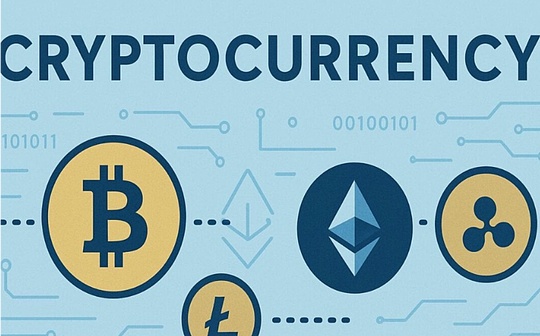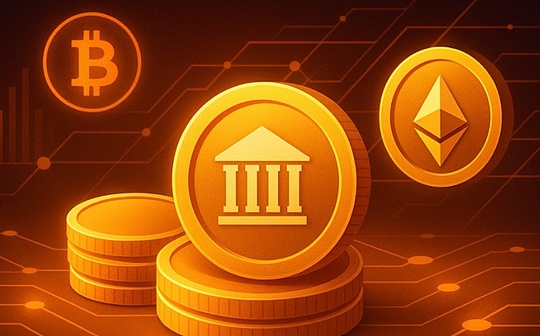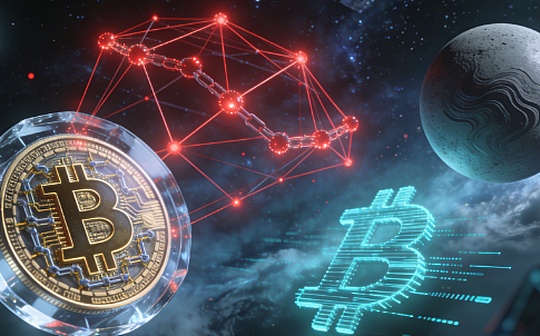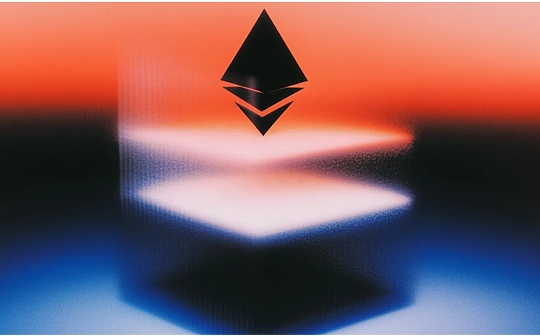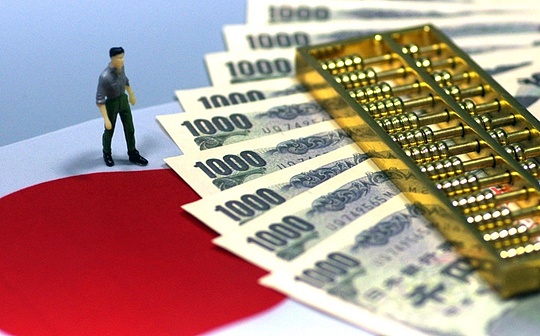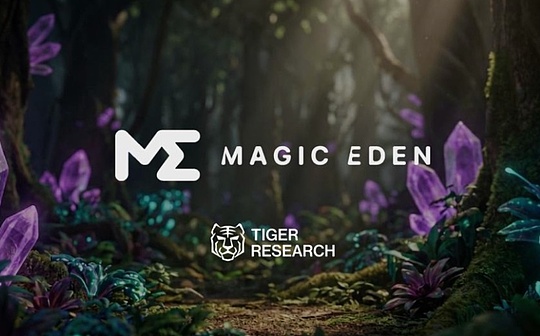
Author: Jeff Dorman, Chief Investment Officer, Arca; Translation: Bitchain Vision xiaozou
The growth of cryptocurrencies is still not understood by most people
Digital assets generally fell last week, but there was no compelling reason.On the positive side, the White House released a report from the Presidential Working Group on Digital Asset Markets (PWG), and SEC Chairman Atkins announced the launch of the project crypto program, which will promote the on-chain flow of all assets and ultimately allow brokers to trade all assets on one platform.On the negative side, the Fed kept interest rates unchanged the day before the release of its extremely weak employment report, causing market expectations for a rate cut in September to rise to 80%, copper prices plummeted due to a reversal of tariff policies, and mixed financial reports of technology companies triggered downward fluctuations in U.S. stocks.
The price movements of cryptocurrencies in the past nine months have indeed attracted people’s attention, but is this concern correct?I often receive calls from financial reporters asking me to comment on certain topics.Although this year is arguably the most breakthrough year in digital asset history, and Wall Street and average investors’ interest in blockchain and cryptocurrencies has reached unprecedented heights, the topics that the media has made me comment on have hardly changed in the past seven years.They usually focus on the following basic topics:
“Why is Bitcoin rising (or falling)?” and “What is your target price?”
“Is this an altcoin rebound?”
“Which L1 protocol (ETH, SOL, or other new favorites) will win?”
“Meme Coin…” (I’m too lazy to listen to what the problem is because I’m tired of listening)
There are also new questions such as “What does Trump’s policy mean? What impact does this have on TRUMP coins?”
I have never received a question about BNB – although it is one of the best tokens in history from the perspective of token economics and return on investment, and its issuance is also one of the most profitable and innovative companies in history.However, I have been asked many times about Changpeng Zhao (CZ, CEO and Founder of Binance).
I have never received a question about Hyperliquid (HYPE) – although it is probably one of the most profitable per capita in history and one of the fastest growing companies, and its token issuance method is unique (by airdrop to users, without accepting any VC investment).
I’ve never been asked about Pump.fun (PUMP) – the same rapidly growing company has recently completed one of the largest and highest valuation ICOs in history.
I have never been asked about Aave (AAVE) – the net deposit size of this on-chain lending agreement exceeds US$50 billion, and it can rank among the top 50 banks in the United States by deposit volume.Aave accounts for nearly 18% of the total locked-in value of DeFi (TVL), has a share of nearly 80% of the on-chain lending market, and holds more than half of the net deposits in the DeFi field.
Just imagine, if financial reporters do not report on Amazon, Google, recent IPOs or JPMorgan Chase, but only raise general questions about gold, meme stocks and the S&P 500, such reports obviously cannot attract the interest of the majority.Unfortunately, this is exactly the current reporting status in the digital asset field.It is difficult to tell whether this is due to reporters’ lack of professionalism in reporting more interesting topics in the field of encryption, or whether the financial audience’s lack of interest in these contents.
Why is the L1 protocol valuable?
Readers who often read my articles know that I hate the name of “altcoin” – it simplifies all crypto tokens outside of Bitcoin into a single category.Although this word is completely outdated, its etymology does have its origin: “altcoin” originated from the early stages of the development of the crypto industry. At that time, there were only two types of tokens except Bitcoin: Bitcoin clone (XRP, BCH, LTC, etc.) and L1 smart contract protocol (such as ETH, ADA, EOS, XLM, etc.).These tokens were indeed a replacement for Bitcoin at the time.Almost all the problems in the current crypto industry terminology and reports are the root cause of this: only these two types of tokens exist in the early stages of the industry (Bitcoin and L1 protocols), but industry terms fail to keep pace with the times to cover today’s increasingly rich sub-sector fields, token types and issuer types.Today, the scope of digital assets is far broader and most of them have nothing to do with Bitcoin, so it is ignorant to classify all tokens as “altcoins”.
The L1 smart contract protocol is the most important infrastructure in the entire encryption field, but it has also given rise to the most criticized phenomenon in crypto investment.
It all started with the Fat Protocol Theory—a theory that was quite academically inspiring but ultimately proved completely wrong.After the success of Ethereum ETH tokens, this theory triggered a wave of investment in the emerging L1 smart contract protocol by VC institutions.Now ten years after ETH’s initial token issuance, the market is filled with a large number of useless and overvalued L1 protocols, which have inflated market capitalization and have received huge investments from venture capital.Similar to the recent digital asset vault companies (DATs), investors rarely lose money when investing in new L1 protocols, so the financing boom for such startups will not stop.
But have you ever asked the most basic and simplest questions to investors in the L1 smart contract protocol token?
“Why is ETH (or L1 protocol token) valuable?”
I asked this question several times but never got a satisfactory answer.
It should be clear that to have value in everything, it must have both financial, practical and social value.
Most L1 protocol tokens do have these three values at the same time, which is a good start.Financial value comes from the expenses incurred by network use (gas fees or application payments), practical value comes from the use needs of assets (pay Gas fees, as collateral or participating in pledge), and social value comes from the tribal culture on the chain (cool factors).Therefore, there is no doubt that the L1 smart contract platform token does have some value.
But how can we explain the outrageously high valuation obtained by ETH’s $460 billion valuation, SOL’s $100 billion valuation, and other L1 agreements with almost no economic activity?
Let’s start with a simple and specific analysis:
Financial Value
By roughly estimating the revenues of several L1 protocols with the highest market capitalization (in US dollars), we can calculate the price-to-earnings ratio of their tokens.The S&P 500 has a historical price-to-earnings ratio of 16 times, currently close to 24 times, while the L1 protocol’s price-to-earnings ratio is generally close to 100 times the charge.
Therefore, unless you think that trading volume and transaction frequency will surge, or fees will rise significantly, it is difficult to justify holding these assets at current valuations from a financial perspective.These tokens do have certain financial value, but they are by no means enough to support such a huge market value.

Practical value
ETH is indeed practical, but aluminum is also practical but has limited value.To create continuous demand for practicality factors, the following conditions need to be met: Everyone must always hold a certain amount of ETH (or SOL) in their wallet for transactions or collateral.But the current reality is not the case – the supply of blockchain space far exceeds demand.
Currently, there are more than 200 million wallet addresses that hold ETH or interact with the Ethereum chain.Industry-General recommends that user wallets retain approximately 0.1 ETH as fee buffer (especially ERC-20 transfers or DeFi interactions).Based on this estimate: 200 million wallets × 0.1 ETH, that is, about 20 million ETH may be idle as Gas reserves.Based on the current ETH price (about $3,600), the equivalent of $72 billion of funds is only used to pay the Gas fee.
On Solana, the fee for a single transaction is extremely low: standard transfers only require about 0.000005 SOL and 0.02 SOL to support about 4,000 transactions.Assuming that about 100 million active Solana wallets all retain 0.02 SOLs as buffers, it is estimated that 2 million SOLs are idle for transaction costs.Based on the current SOL price of about $170, about $340 million of funds are reserved for Gas fees.
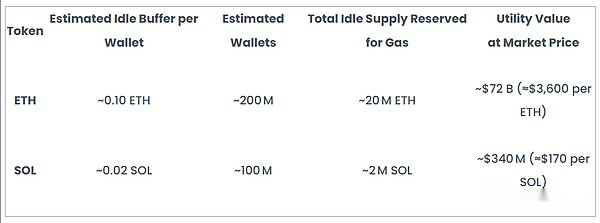
Therefore, these tokens do have certain practical value, but they are by no means enough to support such a huge market value.
Social Value
Finally, let’s look at social values.Is it cool to be one of these networks?Perhaps it did 5 years ago, but now every crypto project has its own L1 protocol or is building its own L1, and this halo effect has basically disappeared.Although social value exists, it is gradually weakening.However, most of the value of the L1 smart contract protocol comes from social value, because both financial and practical value are relatively low relative to its market value.
Let’s analyze the two largest smart contract protocols using the above-mentioned segment valuation method:

If all L1 protocols are analyzed similarly, the results will be similar.Financial Value + Practical Value is much lower than market value, which means that most of the value comes from social value (70-80% of the token value).
Perhaps the above-mentioned segment valuation method is too rough, and there are other sources of the value of the protocol native tokens.After all, native tokens will become the reserve currency on the chain.For example, meme currency traders on SOL use SOL to buy and sell tokens instead of USDC or other stablecoins; NFT traders use ETH.But should these blockchains really be worth up to $90 billion and $450 billion?Just because they support trendy transactions that almost no one considers to be the future of blockchain?Perhaps the focus is not on the current trend, but on the trends and use cases that may appear in the future – no one can predict the emergence of DeFi summer, ICO, NFT, meme coins or other blockchain growth engines in advance.However, those who hold these L1 protocol tokens as reserve currencies do benefit from the rapid rise of these trends.
Nevertheless, the core goal of blockchain is asset transfer, and 99% of global assets are stocks, bonds and real estate.”small” crypto assets such as NFTs, meme coins and even equity tokens for real crypto businesses (such as DePin and DeFi) are almost meaningless in the overall situation of pushing real assets to be on the chain.
So the question is: Which blockchains will carry the most real assets in the future?Even if the Divisional Valuation Analysis (SOTP) shows that its valuation is overvalued, this chain may still be undervalued as it will achieve the fastest growth.But the trading pair on this chain will be stablecoins, not native tokens.
Blockchain is obviously valuable, but any objective value analysis may conclude that the current price of the token is overvalued by 50-80%.Perhaps the fundamental reason why these L1 protocols can trade at 100 to 1000 times fee multiplier is that the market only compares it based on BTC, rather than based on fundamental analysis.When you use an asset (BTC) that does not have a valuation model itself as a reference, the comparison conclusions you draw are bound to be absurd.
I have been building a fundamental valuation model of crypto tokens for nearly ten years, and no one can logically explain why the L1 protocol is worth the current valuation.My former colleague Nick Hotz’s attempt is closest to the answer – he treats the L1 blockchain as a country, thus equating native tokens with fiat currencies.But this method is still not a real valuation analysis because it falls into circular argumentation (values ETH in units of ETH).
Although there are subtle differences in the reported data about ETH short positions hitting record highs (mainly due to basis trading), this phenomenon may have deep rationality.If market participants begin to agree with me, the L1 protocol will eventually evolve into an infrastructure-based commodity similar to a telephone operator.
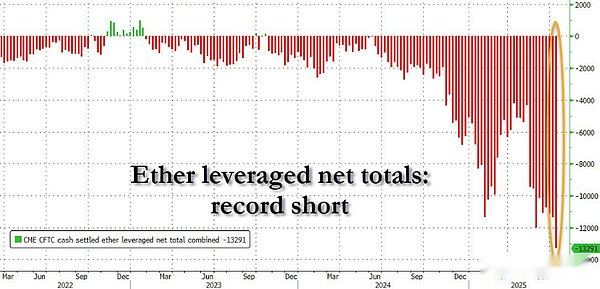
From my personal point of view, if blockchain can really become the ultimate trading technology for all assets, then the total value of all L1 protocols is likely to be higher than the current market valuation.How valuable is the Internet?If this analogy holds true, then the sum of all blockchains does have great value—but most individual protocols may not be.There may be only 1-2 winners in the end, so I would rather choose a deal worth $1-2 billion than those with over $50 billion, after all, they are essentially high-risk bets, and I prefer low-priced chips.
But this judgment is based on my core point of view: 99% of global assets have not been listed yet, which means that the current advantages of ETH or SOL are insignificant in the long run – because these on-chain assets are only a test phase for using valueless assets.
More optimistic answers are closely related to security.For example, Treasury Secretary Scott Bessent predicts that the scale of stablecoins will reach $3.7 trillion.To support the $4 trillion stablecoin market, how much market value does ETH need?”That’s why I think Goldman and JPMorgan will eventually stake ETH – ensuring network security,” said permanent ETH bull Tom Lee (via private communication). Given his prediction of a 15-fold increase in stablecoins, he believes ETH will grow 30 times.

I agree with this analytical framework very much.This logic does hold true—if you are a traditional financial institution trying to dominate the stablecoin field, you will naturally invest in the L1 protocol token that provides underlying security for this business.
Ironically, this is completely contrary to the “fat protocol theory”.The real value actually exists in applications built on the chain, not in the underlying protocol itself.But to support the development of these applications, the value of the underlying protocol will also grow.

